5 Exercises FFs Should NOT Do & What To Do Instead – Part 4
As I’ve discussed in the prior articles in this series, there are many exercises that we do in the gym that, although they may work the intended muscle group, they place too much stress on the spine. Firefighters should avoid these exercises like the plague because, due to the nature of your job, your back already has to deal with lots of forces that can progressively lower your threshold for injury.
Calf-Raises And The Spine
The calf-raise machine is one of those exercises.
There are three different types of forces that can be placed on body segments and joints: tension (a pulling apart), compression (a pushing together) and torque (a twisting).
The joints we’re concerned about here are the Inter-vertebral Joints in the spine.
Compression is the most damaging to those joints. The reason is because there’s a fluid-filled disc between each set of vertebrae (very important little guys) that can become permanently damaged if ruptured. Torque can also be really damaging to the inter-vertebral joints which I’ll discuss next week.
So don’t voluntarily load up your spine! If you’ve got to do it when wearing your gear and pack then avoid it otherwise! If you want strong calves, plyometric exercises are a great way to work them.
Box Jumps!
Try doing box jumps – picture below. Not only will they improve lower leg strength and power, they place minimal stress on your knees, hips and back, and they get your heart rate up, so you’re getting in some cardio at the same time.
Read the complete series here:
5 Exercises FFs Should NOT Do & What To Do Instead
Part 1: Introduction
Part 2: Extensions & The Superman
Part 3: Sit-Ups & The Plank
Part 4: Calf Raises & Box Jumps
Part 5: Extreme Twists
Part 6: Hamstring Stretches




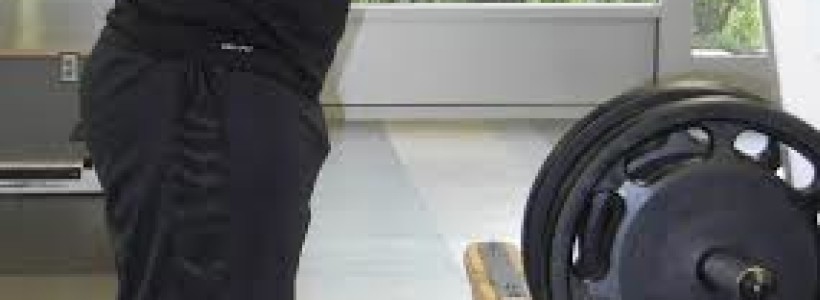

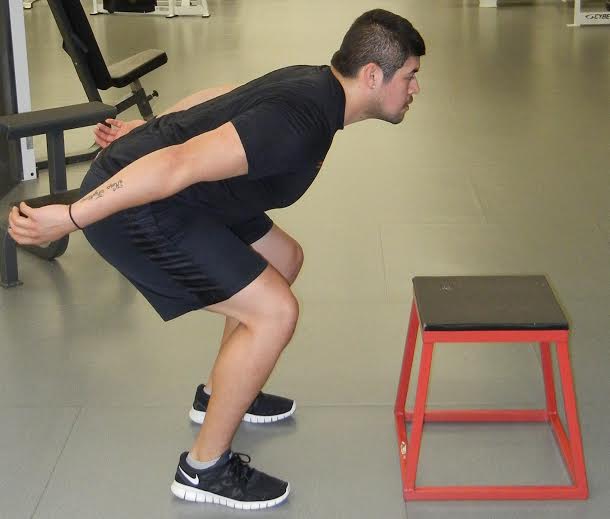
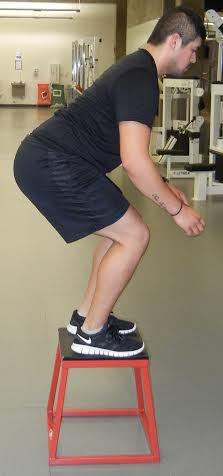
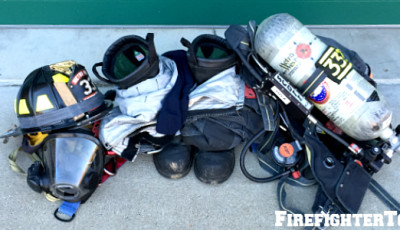
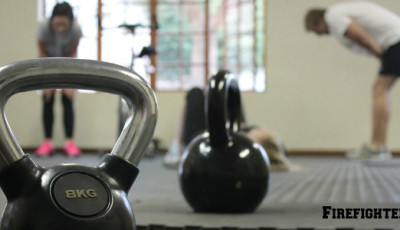
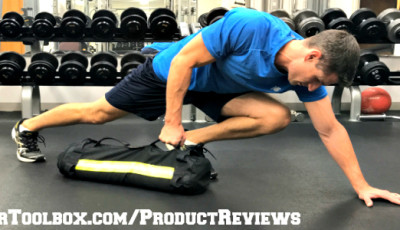
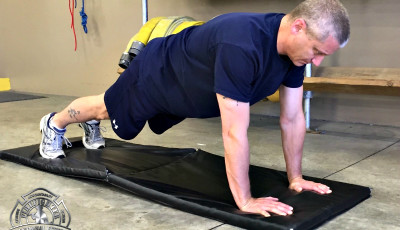




Thanks for the vital information , most of us were not aware of the effects of some exercises
No problem, glad I could be of service!
Pingback: 5 Exercises FFs Should NOT Do & What To Do Instead – Part 3 | FireFighterToolBox
Pingback: 5 Exercises FF Should NOT Do & What To Do Instead – Part 5 | FireFighterToolBox
No disrespect intended Dr but you are saying compression exercise is bad for your spine. What about squats, deadlifts, shoulder shrugs barbell curls etc. These are the staples of becoming fit and strong to prevent injuries on the job because they not only involve major muscle groups but many intrinsic muscles also.
steve
Hey Steve! EXCESSIVE compression force is bad for the spine. For example, if you were driving down the road in an ambulance, went over a big speed bump, and came crashing down on the seat with a straight back, that’s a compression for that could cause injury (I know a firefighter that broke his back that way:) Squats, deadlifts and many exercises you do in the gym apply forces to the spine, but not excessively, so they are plenty safe to do and are in fact important for gaining the strength to do the job well. Thanks for asking!
Stepping off the box or rebounding off the ground? Its hard to get the heart rate up when stepping off. And the amount of compression force that is rapid while rebounding could be more than a calf machine. Particularly when fatigue sets in and good landing mechanics fades. This is a great movement when done, taught, and progressed properly. Same with the calf machine. Other effective and safe alternatives before going to a box jump could be jump rope, calf raises holding a dumbell, or farmer carries walking on the toes. I personally believe a single joint movement is not an efficient use of time, unless its such a weak link and needs to be addressed.
As a pureist and traditionalist Vershonsky’s original concept of plyometric, or shock training, was a rapid overload of the eccentric with a (this is key) rapid transition to the concentric. Unfortunately these days any activity involving jumping no matter the intensity are called plyometric.
Compression forces from a selectorized calf machine are bad, but compression forces from squats and deadlifts are safe and necessary?
With all due respect doctor, as a subject matter expert for this website you have to be careful of contradictions like this. My experience has taught me that the physical therapy paradigm does not blend well with performance improvement and injury prevention. Whether its a sport athlete or an industrial athelete (ex ff, leo, military). SME’s that are stuck in a physical therapy paradigm often contradict themselves. I have also witnessed individuals that adhere to these types of programs get hurt. They were not able to handle forces, speeds, and ROM’s because it was dangerous to do certain exercises, go fast, heavy or through a full or even extended range of motion. The programming however is seen as sound because it avoids the “no-no exercises” and includes plenty of “functional stability.”
The NSCA started trending toward a physical therapy paradigm and drove many excellent coaches away. Coaches that could build strong, powerful, well conditioned injury proof athletes.
I encourage you to shift your paradigm. A coach with sound doctrine would never implement modalities that would cost an athlete a season, championship, career, or retirement. A conservative approach however, can put your charges at risk because effective modalities that can adequately prepare a FF are seen as dangerous.
Shane,
If you can’t get your heart rate up, by stepping off the box ( which is the only way I will do box jumps ), then you are doing something wrong. You can actually do step-ups faster than box jumps, if you really try, getting your heart rate up, immensely. You need to focus on doing the jump, making sure you open up your hips at the top, then stepping down, with speed.